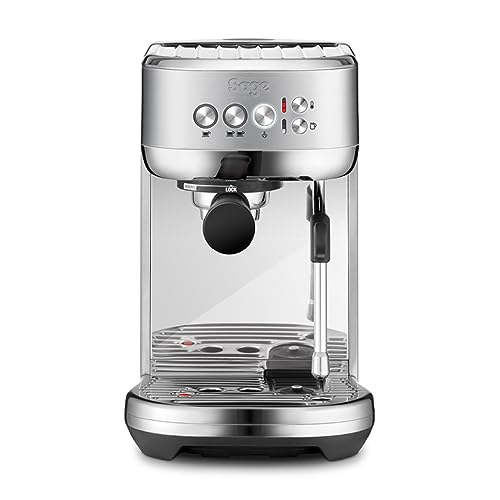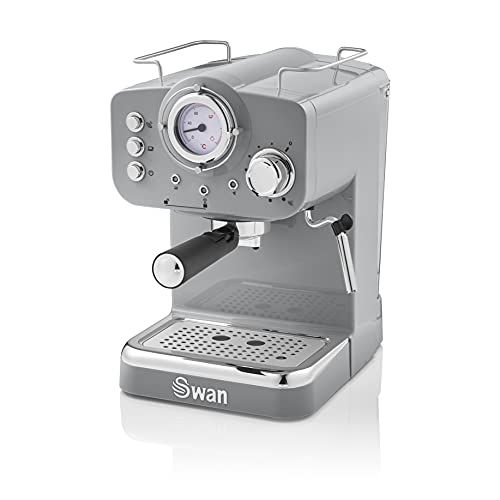This Is The Ugly Facts About Barista Espresso Machine
Latashia
2024.12.16 09:19
594
0
본문
 What to Look For in a Barista Espresso Machine
What to Look For in a Barista Espresso Machine The espresso machine with milk frother machine is one of the most complicated coffee machines on the planet. It is made up of three main parts. The bottom holds the water, and the middle is the filter-basket.
The espresso machine with milk frother machine is one of the most complicated coffee machines on the planet. It is made up of three main parts. The bottom holds the water, and the middle is the filter-basket.The machine was a huge success and helped to popularize home barista espresso. Features include a 2.2L steam boiler, low pressure pre-infusion, and 9 bar pressure for brewing.
Pressure
If you're serious about coffee and know that the pressure of your automatic espresso machine maker is an important factor in how well your drinks come out. You may be looking for an even layer of crema, or the perfect balance of acidity and flavor the pressure of your espresso machine is the key to brewing good espresso.
BARs (Barometric Pressure) refer to the force that is applied to the coffee grounds when your espresso machine is pumping out its high-pressure water. The espresso machine is pushing hot water through the grounds of your coffee at nine times the Earth's current atmospheric pressure.
The pressure of your espresso machine is important as it allows the water to pass through the grounds of coffee at the proper speed and intensity. If the pressure is too low the dissolved oils and flavors won't be extracted properly. If the pressure is too low the flavors and oils dissolved won't be extracted properly.
You can control the pressure of your espresso maker by changing the screw of the espresso maker. Commercial machines and a few high-end home machines use rotary pumps that are adjustable. However, for the less expensive home machines that have an oscillating pump, changing the pressure isn't possible without using DIY hacks. However, companies such as Cafflano are working on technology that makes use of Pascal's Principle to maintain pressure inside the portafilter during the fermentation process.
Temperature
The temperature is among the most important factors in brewing a great espresso shot. Too hot water can burn the grounds of the coffee, leading to bitter brew. The ideal temperature for extraction is 200 degrees Fahrenheit. This allows the water extract all the desired coffee flavors without scorching the grounds or causing excessive extraction.
The top espresso machines come with the thermoblock, also known as a thermocoil, which heats water and keeps it at the same temperature throughout the extraction cycle. The Breville Barista Express, for example, features a PID (Proportional Integral Derivative) system that continuously monitors the temperature of the water and adjusts as necessary, ensuring that the brew head stays at the ideal temperature to extract the coffee.
The majority of coffee drinkers are aware that the temperature of your espresso machine is an important factor to brewing a high-quality cup of coffee. The ideal temperature for espresso is between 190 and 196. To attain this, you will require an espresso machine that has a high-quality thermoblock, thermocoil and boiler that is properly sized.
It is also crucial to pre-heat your espresso maker, portafilter, and cup prior to making espresso. espresso coffee maker makers who are beginners often make the mistake of not preheating their equipment. It is advisable to read your espresso machine's manual before you start using it for the first time.
Grind
A barista espresso machine should provide a variety grind settings for you to have the most control over the final cup of coffee. Some machines include an analog gauge that is cool and helps you improve your brewing skills. You should strive to maintain a pressure of nine bars throughout the entire brewing process. This machine is near getting to that point.
A built-in burr mill is another nice touch. This feature is ideal for those who are new to the field because it avoids the need to purchase an additional grinder. The grinder is a conical stainless steel device that has 18 settings from "coarse" to "fine."
This grinder isn't quite as good as a stand-alone device, but it's an excellent beginning and will get you on the right track to brewing quality espresso shots. It's easy to clean and you can stop the grinder during the process of grinding to avoid accumulating a huge amount of ground in your portafilter when it's being tamped.
This gorgeous and practical machine will allow you to experience being a barista in your home. It's a great choice for those who want to to revisit the fond memories of pouring microfoam into your morning cup of coffee, locking a portafilter into the grouphead, and then tamping with precision. A bean-to-cup machine is an excellent choice to those who prefer convenience.
Water
Water can be a tricky thing to master. Finding the right balance is essential. If you're using too much, it could cause mineral deposits in your machine, but too little and you'll struggle get a good cup of professional espresso maker espresso machine for Home (johsocial.com).
The ideal espresso water is soft and high in alkalinity. This is best bean to cup espresso machine achieved using an water filter system that eliminates chlorine and brings back in a small amount of total dissolving solids (TDS) to add some calcium and magnesium to the mix. This will give you an ideal balance between hardness and acidity and avoid the need to decalcify.
Using a high-quality filter water is vital to your machine's long term health and the flavor of the coffee it makes. Based on the usage and the hardness of your machine, you should make use of descaling products on a regular basis. They are available in liquid, powder or tab form at a majority of hardware stores.
The Breville Barista Express is a high-end, premium home espresso machine that was designed to bring the experience of a cafe into the home. It is more sophisticated over other basic machines that are designed for coffee lovers who wish to perfect their technique and perfect their craft. The thermocoil heating system with integrated PID controller that is centered on the active heated group head makes it easy to control your brewing temperature. This is an enormous benefit over other models which require longer "temperature surfing" to get a consistent shot of espresso.

댓글목록 0